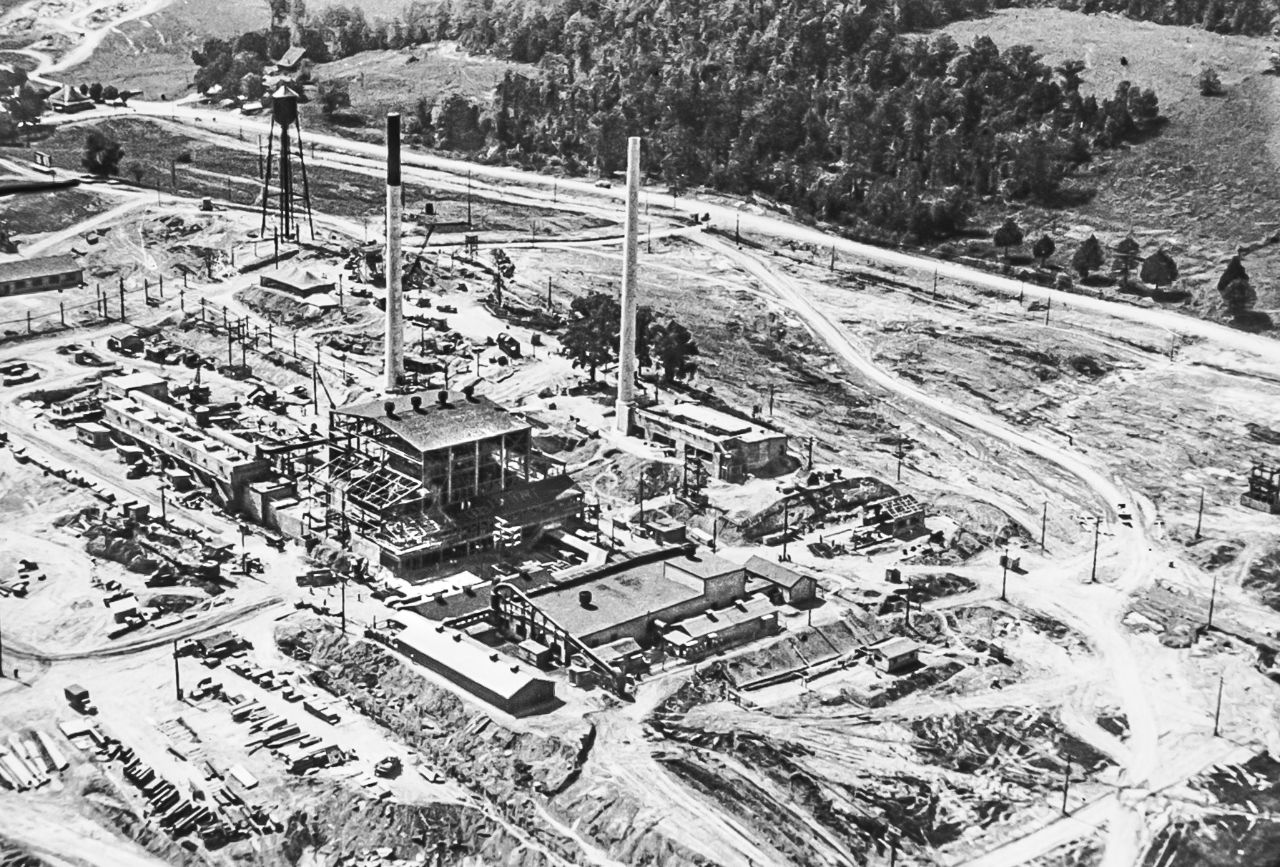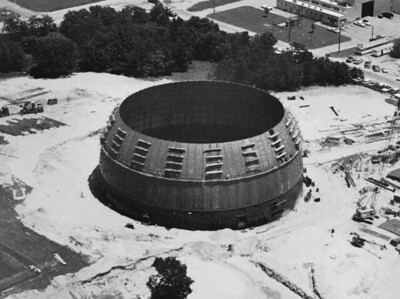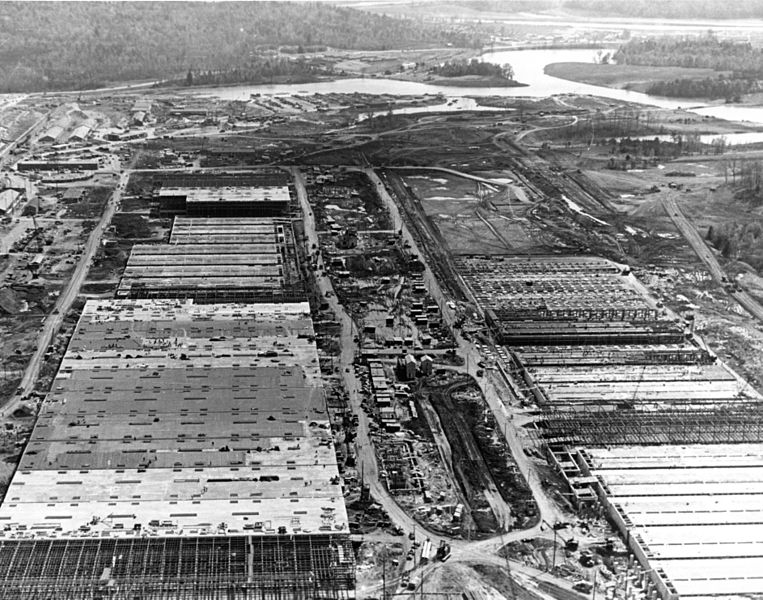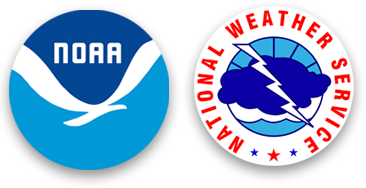Weather for the "Atom Splitters" - National Weather Service Heritage

Weather for the "Atom Splitters"
By NWS Heritage Projects TeamThe following article appeared in the April 1949 issue of Weather Bureau Topics:
Even atomic scientists worry about the weather, a quantity as yet beyond their control. Nor has the Atomic Era left the Weather Bureau unaffected. Two Weather Bureau Offices (WBO) have been set up exclusively to fulfill the needs of the United States Atomic Energy Commission, to help with isobars where isotopes won’t work. The stations are at Upton, N. Y., and Oak Ridge, Tenn. -- the latter station maintained through funds supplied by the AEC.
The Upton Weather Bureau Office, working in close connection with Brookhaven National Laboratory, is engaged in varied activities which are quite different from the usual tasks of a Weather Bureau Office. Research in the diffusion processes in the lower atmosphere, for which unequalled facilities exist at Brookhaven, is an example.

containment vessel at Brookhaven, June 1962
FORECASTING DIFFUSION
Technical and material assistance is also given to the Laboratory’s Meteorology Group in measuring and forecasting diffusion conditions. Once operation of the Brookhaven reactor begins, this information will be used by the scientists of the Nuclear Reactor Project in the following way: As ordinary air, used for cooling, passes through a nuclear reactor, some of the air’s argon becomes radioactive. Radioactive argon has a “half-life” of 110 minutes, which means that its radioactivity is halved in slightly less than 2 hours. After cooling the reactor, the air will he returned to the atmosphere via a 300-foot stack. Through the use of the most exact available knowledge of atmospheric diffusion conditions, the waste gases will be released only during periods favorable for rapid dispersion.
Meteorological and climatological advice is rendered to the Office of New York Operations of the Atomic Energy Commission , the coordinating office for Brookhaven as well 88 for a number of plants which keep the atomic furnaces, laboratories and processing centers supplied with vital supplies and equipment. The problem may be a climatological study of a site being considered for a new installation, or the meteorological factors entering into the design of gaseous waste disposal facilities or recommendations for most effective "health-physics” monitoring, which means seeing that radioactivity is maintained well below safe levels.
The Weather Bureau was first asked to propose a meteorological program for Brookhaven in January 1947, and has since maintained personnel at that site. Tho official in charge at Upton is Raymond C. Wanta, a pioneer worker in this field, having been assigned to the Brookhaven project since its origin. With Mr, Wanta in the Weather Bureau group are Matthew Lefkowitz and Albert J. Belfour.
USES IN OAK RIDGE PLANNING

National Laboratory
Participation of the Weather Bureau at Oak Ridge is of more recent origin. Many meteorological factors had been considered and studied in every stage of planning, construction, and operation of the three huge atomic plants there. However, in mid-1948 the Atomic Energy Commission asked the Bureau to undertake a thorough investigation of micro-meteorological conditions over the 100 miles of washboard-like terrain comprising the Oak Ridge reservation. This study will help the AEC in planning future construction RS to suitable location with respect to the air-flow and also effective gaseous waste disposal systems. It will also give indications as to how health-physics monitoring can be most effectively employed, and may lead to revisions of other procedures. When they are re-examined in the light of new knowledge in unprecedented detail. And, of course, in a community and industrial center the size of Oak Ridge there are also many of the more familiar needs for weather data.
Six men make up the Oak Ridge WBO. They are Joshua Z. Holland (official in charge), Robert F. Myers, John C. Holland, Jack W. Tondee, Howard M. Day, and Edward M. Crume, Sr. These men arrived at Oak Ridge during the last half of 1948 from all corners of tho United States, after a thorough screening by the FBI and AEC. They already have an intensive program of observations under way, including 8-hourly Pibals and surface observations, double-theodolite observations of zero lift balloons many times throughout each day and night for studying the atmospheric eddies, occasional low-level temperature soundings by means of captive balloons and operation of a micro-network of 11 continuously recording substations. But their instrumentation is not yet complete. Soon to begin are routine low-level soundings, air flow studies with chemical smoke pots, and direct measurements of atmospheric turbulence. After approximately a year of full-scale research along these lines, the permanent meteorological facilities for the Atomic Energy Commission and the community will be decided upon.
OTHER PARTICIPATION
The Oak Ridge WBO also serves in an advisory capacity to the Office of Oak Ridge Operations of the AEC, which supervises, in addition to the Oak Ridge plants, a number of other installations outside the area. The Weather Bureau, at the request of the U. S. Air Force, also assigned a meteorologist, Paul A. Humphrey, to the recent atomic tests In the Pacific.
This entire program is being carried out under the direction and supervision of Dr. Harry Wexler, Chief of Scientific Services Division.
Additional information on these sites is available at https://www.ornl.gov/ (Oak Ridge National Laboratory) and https://www.bnl.gov/world/ (Brookhaven National Laboratory). Today, the NWS is back on the Brookhaven campus, as the modernized Weather Forecast Office for the New York City area.
